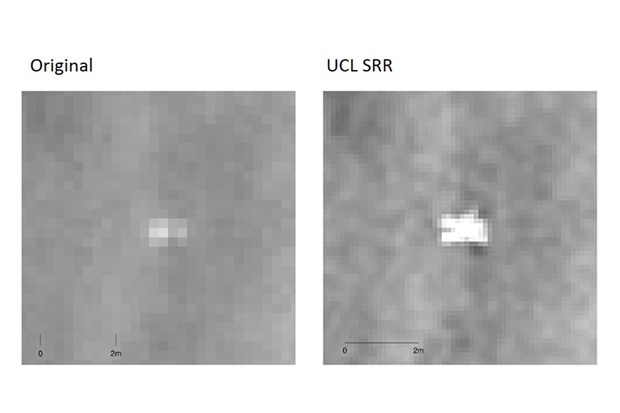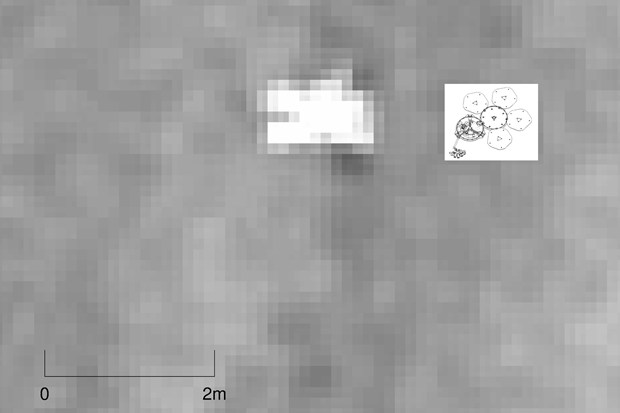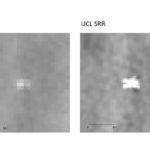Beagle 2 spotted using breakthrough Mars imaging technique
The European Space Agency’s ExoMars Rover mission, due to launch between 2018 and 2020, will benefit from a new SRR technique. A team at the University of Leicester will use SRR to find an ideal landing site for the rover.
The location of the failed Beagle 2 mission to Mars has been shown in unprecedented detail thanks to a new imaging technique. Researchers at University College London stacked and matched a series of images taken from orbit to compile images with five times greater detail than ever before. The images above show What is thought to be Beagle 2 taken last year (left) compared to an image compiled using the new SRR technique (right)As well as more detailed images of Beagle 2, the technique has also been used to image rover tracks and potential future landing sites.
The technique, known as super-resolution restoration (SRR) gives researchers “drone-eye vision anywhere on the surface of Mars”, according to professor Jan-Peter Muller from the University College London Mullard Space Science Laboratory.
“It allows us to see objects in much sharper focus from orbit than ever before and the picture quality is comparable to that obtained from landers,” Muller continued. The likely location of Beagle 2 was first spotted in January 2015, but new images add further credibility to claims that the rover has been found. The findings were published in the journal Planetary and Space Science.
The extra detail comes from stacking matching images taken during multiple orbits and then combining them to find extra detail. Muller said the imaging breakthrough heralded “the start of a new era” in planetary exploration.
An image thought to be of Beagle 2 compared to an illustration of the failed lander
Y. Tao and J. P. Muller
Cameras currently orbiting Mars have a resolution of around 25cm, but matching pictures of the same area but from different angles using SRR brings this down to 5cm. As the surface of Mars remains unchanged for decades, even images captured over several years can be combined.
Researchers at UCL combined between four and eight images taken using Nasa’s orbiting HiRISE camera to get the resolution down to 5cm.
More detailed imagery of the likely final resting place of the failed Beagle 2 mission provides further evidence that the lander has been found. The image appears to show the shape of the lander with its solar panels deployed. The mission, which was due to land on Mars in 2003, failed to make contact on landing. It has been speculated that its solar panels may have malfunctioned, although the exact cause of the failure remains unknown.




